Looking to grow fresh herbs, vegetables, and flowers but short on space? A vertical gutter gardening system might be the perfect solution. This innovative approach transforms ordinary rain gutters into a space-saving, water-efficient garden that can thrive in even the smallest areas. Whether you’re living in an apartment with just a balcony, dealing with poor soil conditions, or simply want to maximize your growing space, this step-by-step guide will show you how to create a beautiful and productive vertical garden using recycled or new gutters.
Vertical gutter gardens are not only practical but also environmentally friendly. They repurpose materials that might otherwise end up in landfills, conserve water through efficient irrigation, and allow you to grow food in previously unused spaces. In this comprehensive guide, we’ll walk you through everything you need to know to build, plant, and maintain your own vertical gutter gardening system.
Get Your Free Vertical Gutter Garden Plans
Download our detailed PDF with exact measurements, material lists, and step-by-step instructions for three different vertical gutter garden designs: wall-mounted, A-frame, and freestanding.
Benefits of a Vertical Gutter Gardening System
Space Efficiency
Vertical gutter gardens make use of vertical space, allowing you to grow more plants in a smaller footprint. This makes them perfect for balconies, small yards, or along fences and walls where traditional gardening isn’t possible.
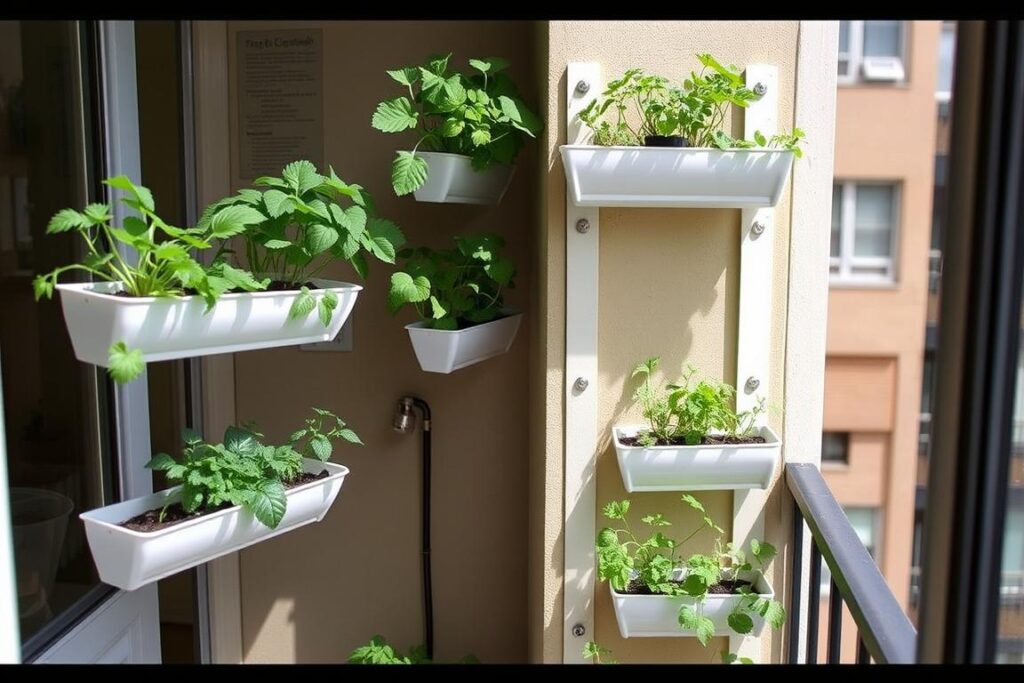
Water Conservation
With a properly designed vertical gutter gardening system, water drains from upper levels to lower ones, ensuring maximum efficiency. This cascading irrigation system means less water waste and lower water bills, making it ideal for drought-prone regions.
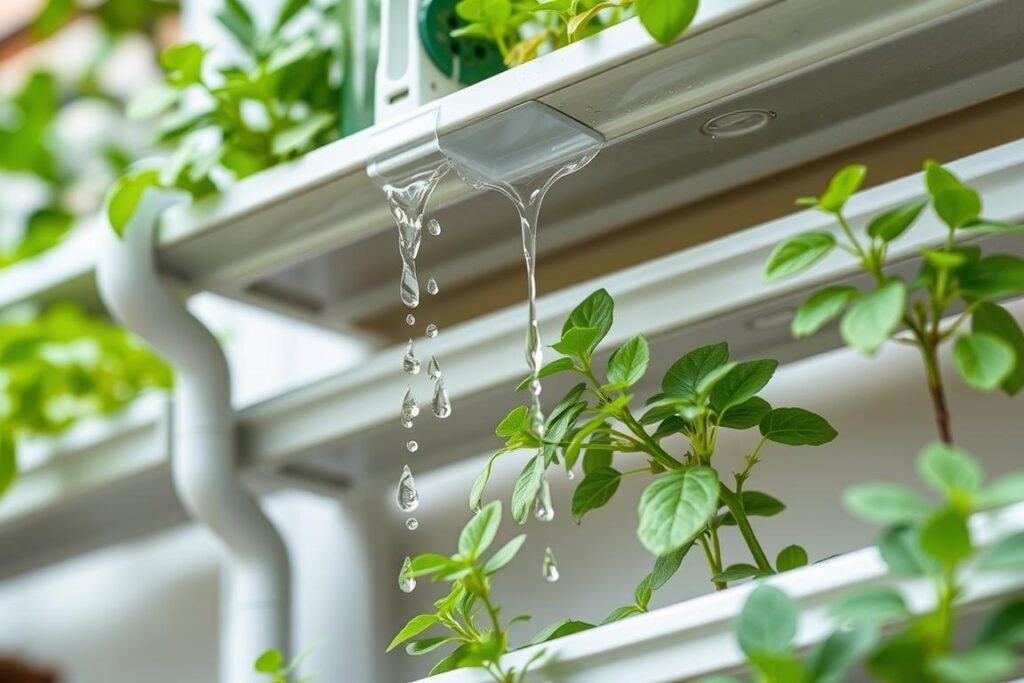
Accessibility
Raised gutter gardens eliminate the need to bend down or kneel, making gardening more accessible for people with mobility issues or back problems. The elevated height also helps protect plants from ground-dwelling pests and reduces weed problems.
Upcycling Potential
Repurposing old gutters gives new life to materials that might otherwise be discarded. This sustainable approach reduces waste while creating something beautiful and functional for your home or garden.
Materials and Tools You’ll Need
Before you begin building your vertical gutter gardening system, gather all the necessary materials and tools. The exact quantities will depend on the size and design of your garden, but here’s a comprehensive list to get you started:
Materials
- Vinyl or aluminum rain gutters (10-foot sections work well)
- Gutter end caps (both left and right sides)
- Gutter brackets or hangers
- Screws appropriate for your mounting surface
- Silicone caulk or gutter sealant
- High-quality potting soil (not garden soil)
- Perlite or vermiculite for drainage (optional)
- Seeds or starter plants
- Drip irrigation kit or soaker hose (optional)
Tools
- Drill with bits
- Hacksaw or chop saw with metal-cutting blade
- Measuring tape
- Level
- Marker or pencil
- Safety glasses and gloves
- Caulking gun
- Sandpaper (for smoothing cut edges)
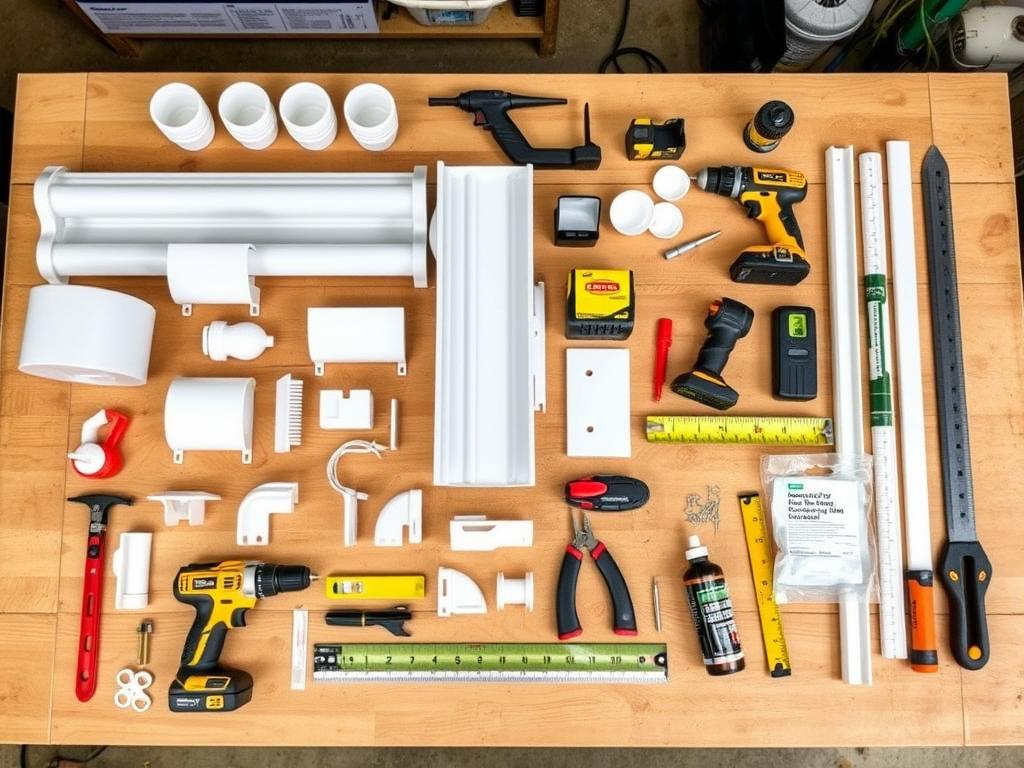
Safety First!
Always wear gloves when handling cut gutters as the edges can be sharp. Safety glasses are essential when cutting gutters or drilling holes. Make sure to use proper ladder safety when mounting gutters at height, and have someone spot you if possible.
Preparing Your Gutters
Proper preparation is key to creating a durable and effective vertical gutter gardening system. Follow these steps to get your gutters ready for planting:
Cleaning and Measuring
If you’re using recycled gutters, start by thoroughly cleaning them with a mild soap solution to remove any dirt, debris, or residues. Rinse well and allow them to dry completely before proceeding.
Measure the space where you plan to install your vertical garden. This will determine how many gutters you need and what lengths to cut them to. For most wall-mounted systems, gutters between 4 and 8 feet long work well.

Cutting to Size
Use a hacksaw or chop saw with a metal-cutting blade to cut your gutters to the desired length. If using a power saw, be prepared for sparks and wear appropriate safety gear. Sand any rough edges to prevent cuts during handling and installation.
For an A-frame design, you’ll need equal lengths for both sides. For a wall-mounted system, measure your available wall space and cut accordingly, leaving a few inches of clearance on each end.
Creating Drainage Holes
Proper drainage is crucial for the health of your plants. Use a drill with a small bit (approximately 1/4 inch) to create drainage holes in the bottom of each gutter. Space the holes about 6-8 inches apart along the entire length of the gutter.
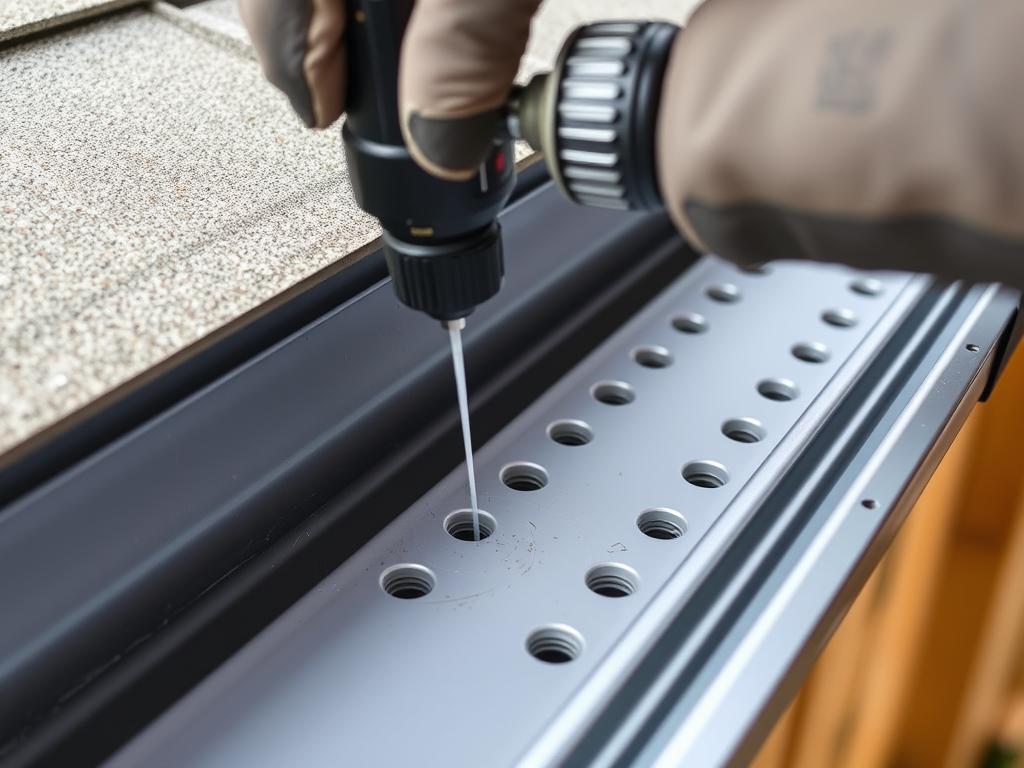
Attaching End Caps
Attach end caps to both ends of each gutter section. Apply a bead of silicone caulk or gutter sealant around the edge before snapping the cap in place to ensure a watertight seal. Allow the sealant to dry completely according to the manufacturer’s instructions.
For a cascading water system, you might leave one end slightly lower or create a small notch to allow water to flow to the next level.
Get Weekly Water-Smart Gardening Tips
Join our email list to receive weekly tips on maximizing water efficiency in your vertical garden, seasonal planting guides, and exclusive troubleshooting advice.
Installation Guide for Your Vertical Gutter Gardening System
Now that your gutters are prepared, it’s time to install your vertical garden. We’ll cover three popular mounting options: wall-mounted, A-frame, and fence-mounted systems.
Wall-Mounted System
A wall-mounted vertical gutter garden is perfect for maximizing space along the sides of buildings, fences, or other vertical surfaces. Here’s how to install one:
- Mark your wall with a level line where the first gutter will go. Typically, the bottom gutter should be at least 2 feet from the ground.
- Space additional level lines up the wall, allowing at least 12-18 inches between each gutter for plant growth.
- Install gutter brackets along each line, spacing them about 24 inches apart for proper support.
- Mount the gutters onto the brackets, ensuring they’re secure and slightly angled for drainage (about 1/4 inch drop per 10 feet).
- Check that all gutters are level from side to side and have the proper slight slope for drainage.
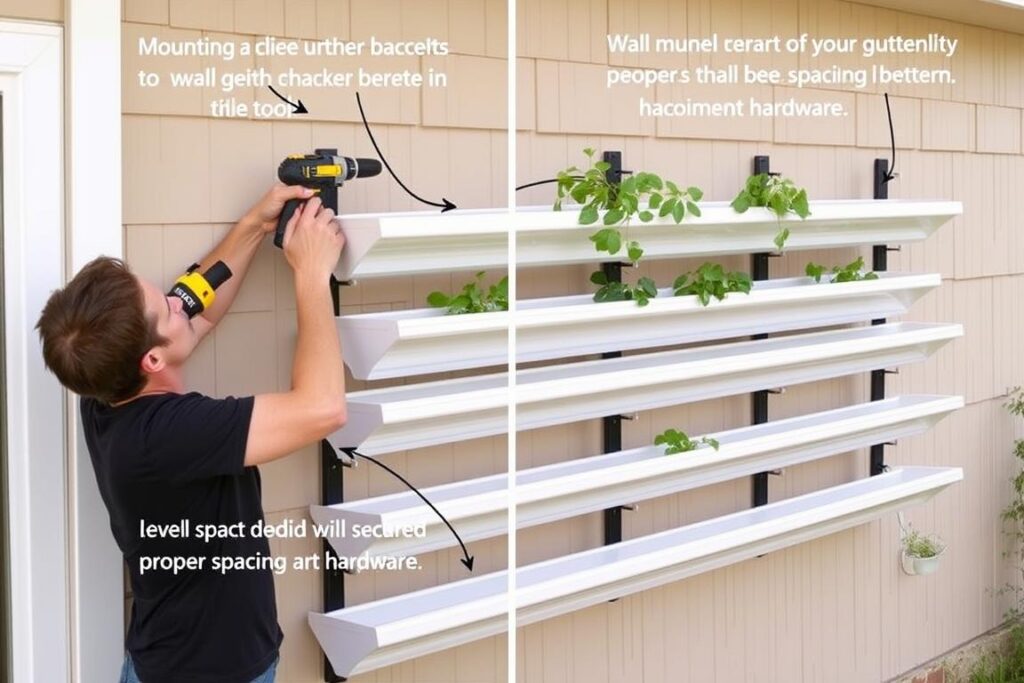
A-Frame System
An A-frame design creates a freestanding vertical garden that can be placed anywhere and even moved if needed. This design is ideal for patios, decks, or areas where wall mounting isn’t possible.
- Build two identical ladder-like frames using 2x4s or 2x2s, with horizontal supports spaced 12-18 inches apart.
- Connect the two frames at the top to form an A-shape, and add a shelf across the top if desired.
- Attach gutter brackets to the horizontal supports on both sides of the A-frame.
- Mount the gutters to the brackets, ensuring they’re secure and slightly angled for drainage.
- Add cross-bracing between the two sides for additional stability.
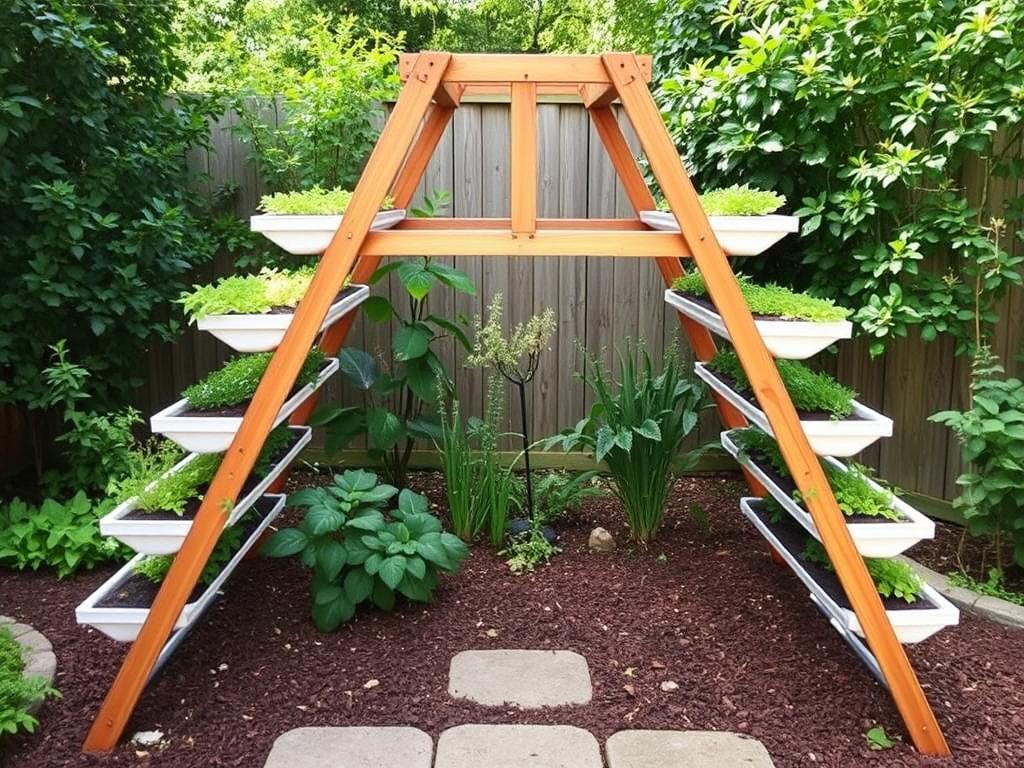
Fence-Mounted System
Fence-mounted gutter gardens are simple to install and make excellent use of existing structures. They’re perfect for adding greenery to privacy fences or garden boundaries.
- Mark level lines along your fence where each gutter will be mounted.
- Install gutter brackets directly to the fence posts or sturdy fence boards.
- Secure the gutters to the brackets, ensuring proper support and a slight angle for drainage.
- For wooden fences, use wood screws that are long enough to provide secure anchoring.

Pro Tip: Securing Your System
For any mounting method, ensure your gutters are securely fastened to prevent accidents. Test each gutter by applying gentle pressure before adding soil and plants. For A-frame systems, consider adding weight to the base or stakes into the ground for additional stability, especially in windy areas.
Soil Preparation and Planting
With your vertical gutter gardening system installed, it’s time to prepare the soil and select the right plants for your space.
Soil Mix for Gutter Gardens
The limited depth of gutters means you need a specialized soil mix that provides good drainage while retaining enough moisture for plant roots. Here’s an ideal mix:
- 60% high-quality potting soil (not garden soil, which is too heavy)
- 20% compost for nutrients
- 10% perlite or vermiculite for drainage
- 10% coconut coir for water retention
This lightweight mix prevents compaction, provides good drainage, and still retains enough moisture for healthy plant growth in the shallow gutter environment.
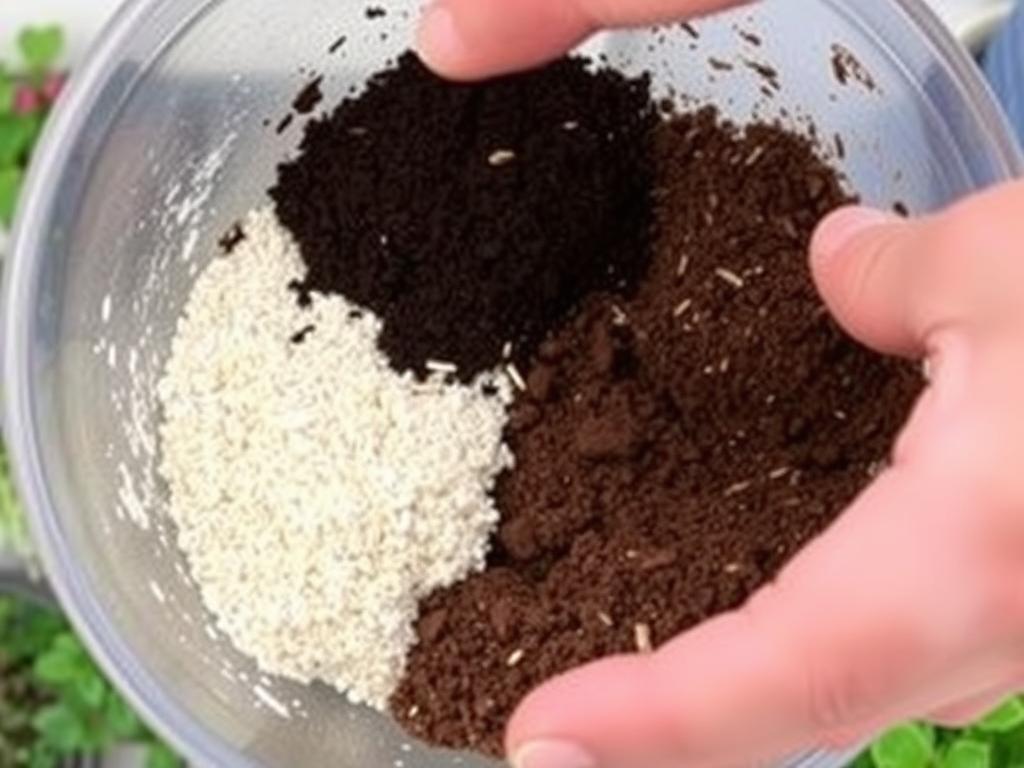
Best Plants for Vertical Gutter Gardens
Not all plants thrive in the shallow environment of a gutter garden. Focus on shallow-rooted plants that don’t require deep soil. Here are some excellent choices:
Herbs
- Basil
- Thyme
- Oregano
- Mint (in its own section)
- Chives
- Cilantro
Vegetables
- Lettuce varieties
- Spinach
- Radishes
- Green onions
- Bush beans (compact varieties)
- Cherry tomatoes (determinate)
Flowers & Strawberries
- Strawberries (especially alpine)
- Marigolds
- Nasturtiums (edible)
- Pansies
- Petunias
- Alyssum
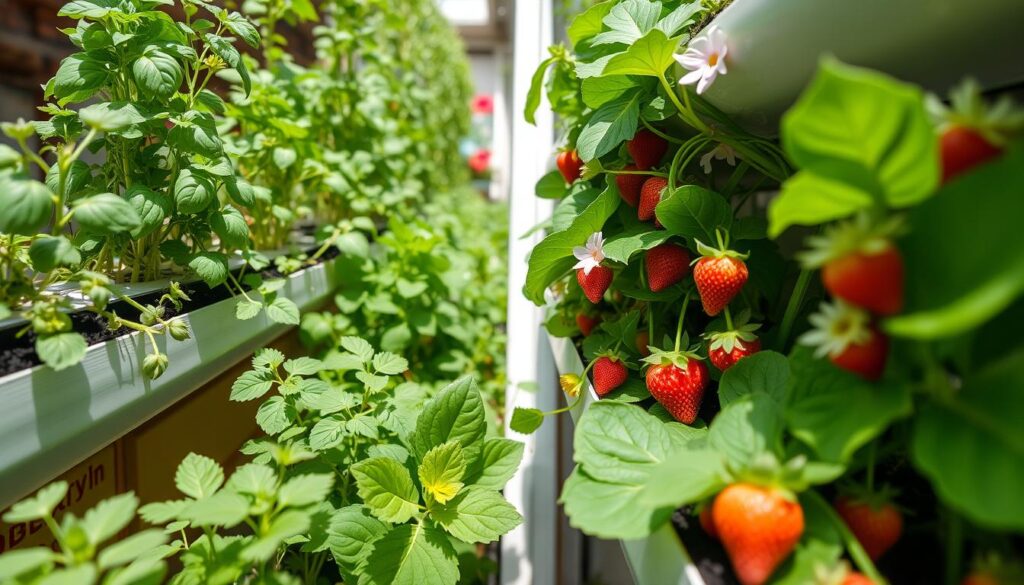
Planting Process
Follow these steps for successful planting in your vertical gutter garden:
- Fill each gutter with your prepared soil mix, leaving about 1/2 inch of space at the top to prevent overflow when watering.
- For seeds, follow the packet instructions for depth and spacing, keeping in mind that you can plant a bit more densely in a gutter garden.
- For transplants, create holes in the soil, place the plants, and gently firm the soil around them.
- Water thoroughly after planting until water begins to drain from the bottom holes.
- Consider adding a thin layer of mulch on top to help retain moisture.
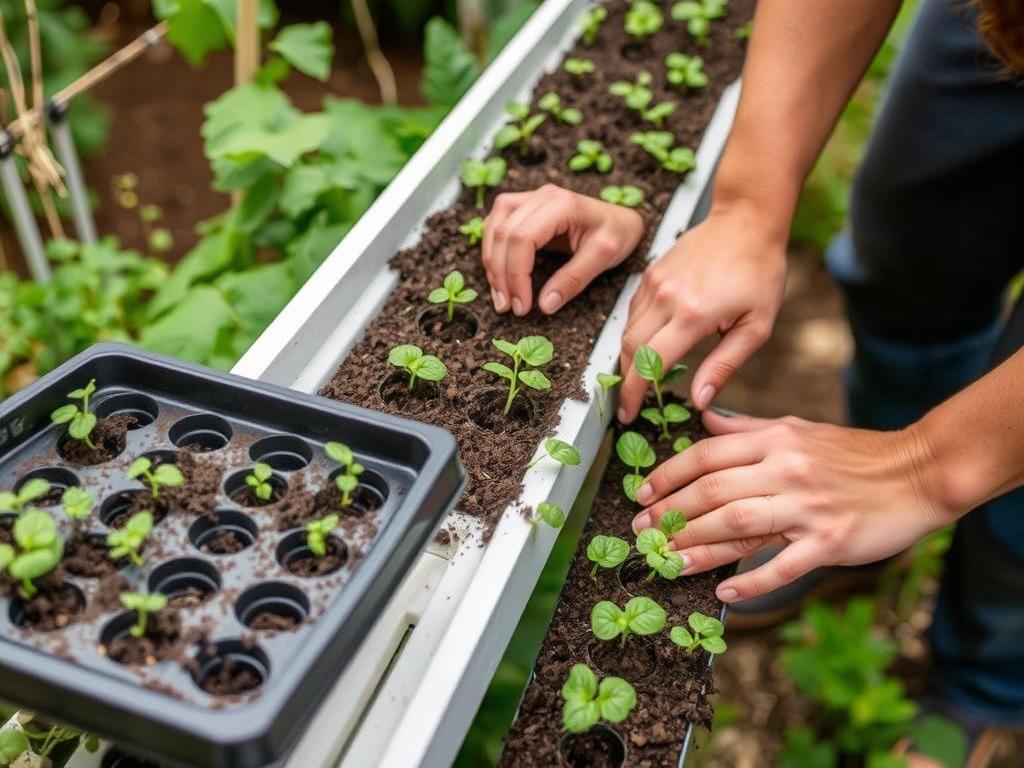
Discover the Best Plants for Your Climate
Access our comprehensive guide to selecting the perfect drought-resistant plants for vertical gutter gardens in your specific growing zone.
Watering and Maintenance
Proper watering and regular maintenance are essential for a thriving vertical gutter gardening system. The shallow depth of gutters means they can dry out quickly, so developing a good watering routine is crucial.
Watering Systems
There are several effective ways to water your vertical gutter garden:
Manual Watering
For small systems, hand watering with a watering can or hose works well. Water slowly at the soil level until you see drainage from the bottom holes. Focus on watering the top gutters first and allow excess to cascade down to lower levels.

Drip Irrigation
For larger systems or busy gardeners, a drip irrigation system with a timer is ideal. Install drip lines or soaker hoses along each gutter and connect them to a timer for automatic watering. This ensures consistent moisture and saves time.
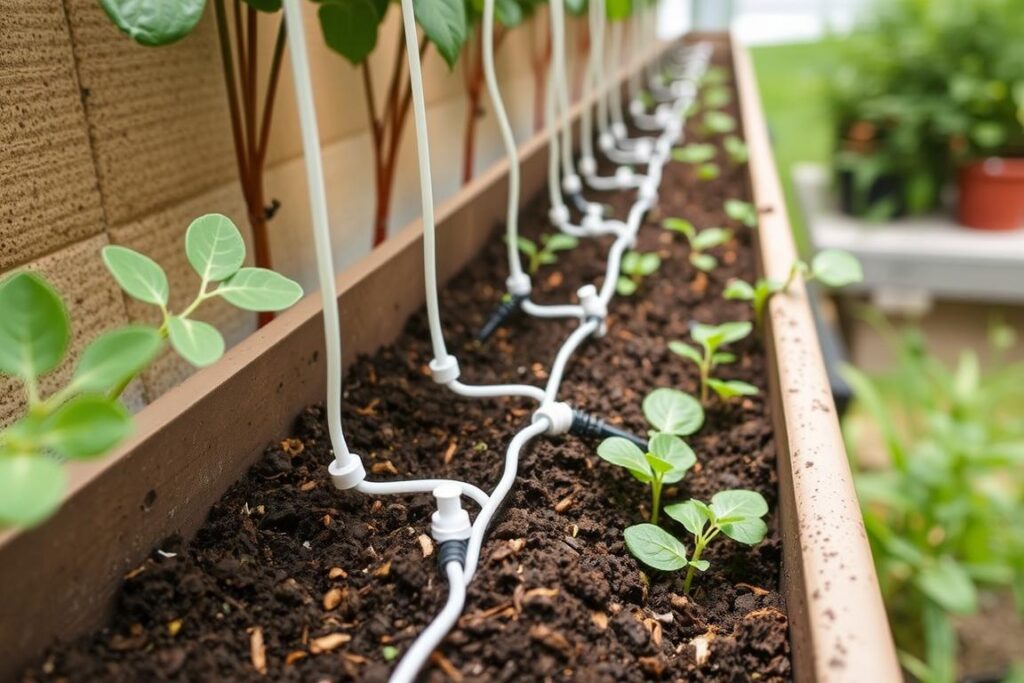
Seasonal Maintenance
Keep your vertical gutter gardening system in top condition with these seasonal maintenance tasks:
| Season | Maintenance Tasks |
| Spring | Refresh soil with compost, check and clean drainage holes, inspect brackets and supports, replant annual herbs and vegetables |
| Summer | Monitor watering needs (increase during hot periods), harvest regularly, check for pests, add liquid fertilizer monthly |
| Fall | Remove spent annual plants, plant cool-season crops, reduce watering frequency, check gutter stability before winter |
| Winter | Protect from freezing if necessary, maintain perennial herbs, repair any damage, plan for spring planting |
Fertilizing
The limited soil volume in gutter gardens means nutrients can be depleted quickly. Implement a regular fertilizing schedule:
- Apply a balanced, water-soluble fertilizer every 2-3 weeks during the growing season
- Consider organic options like compost tea or fish emulsion for edible plants
- Use slow-release fertilizer pellets at the beginning of the season for consistent feeding
- Adjust fertilizing based on plant needs – leafy greens need more nitrogen, while flowering plants benefit from phosphorus
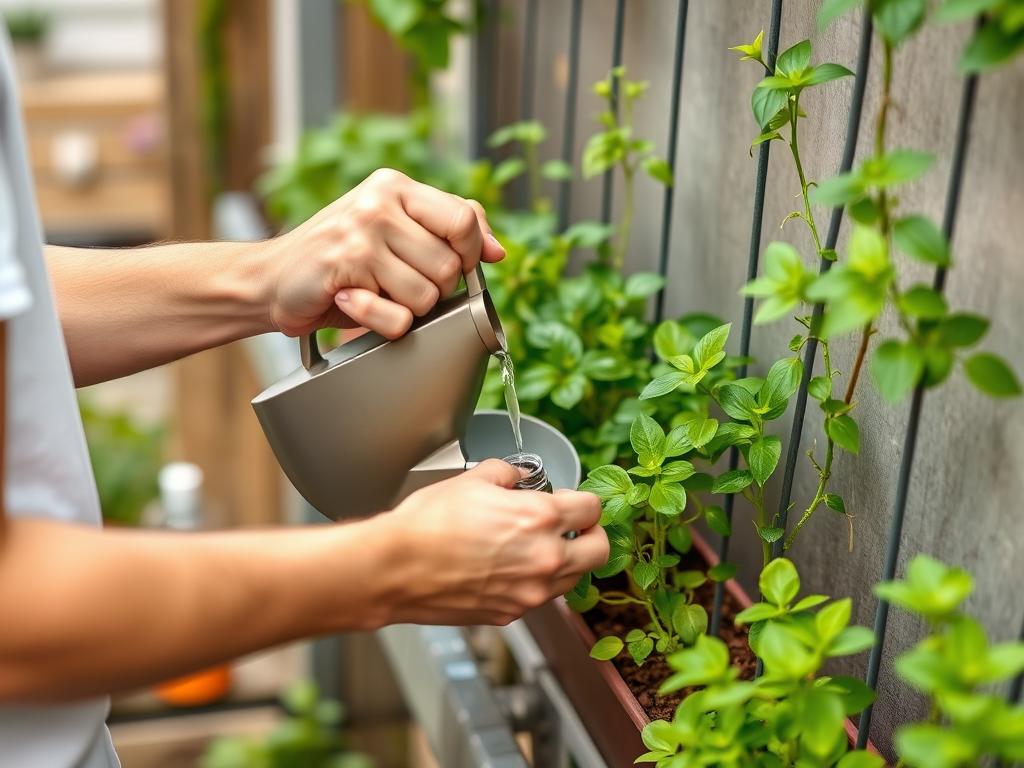
Troubleshooting Common Issues
Even with careful planning and maintenance, you might encounter some challenges with your vertical gutter gardening system. Here are solutions to common problems:
Problem: Soil Drying Out Too Quickly
- Add more water-retaining materials like coconut coir to your soil mix
- Install a drip irrigation system with a timer
- Apply a thin layer of mulch to the soil surface
- Consider shade cloth during the hottest part of the day in summer
- Group plants with similar water needs together
Problem: Poor Drainage and Waterlogged Plants
- Check that drainage holes aren’t clogged and clear if necessary
- Add more drainage material like perlite to your soil mix
- Ensure gutters have the proper slight slope for drainage
- Avoid overwatering, especially during cooler weather
- Consider drilling additional drainage holes if needed
Problem: Structural Issues
- Reinforce brackets if gutters are sagging
- Add additional support points for longer gutter sections
- Check and tighten all screws and connections seasonally
- For A-frames, add cross-bracing for stability
- Consider lighter soil mix if weight is causing structural problems
Problem: Pest and Disease Issues
- Inspect plants regularly for early signs of problems
- Use neem oil or insecticidal soap for common pests
- Improve air circulation if fungal issues appear
- Remove and dispose of severely affected plants
- Practice crop rotation even in your gutter garden
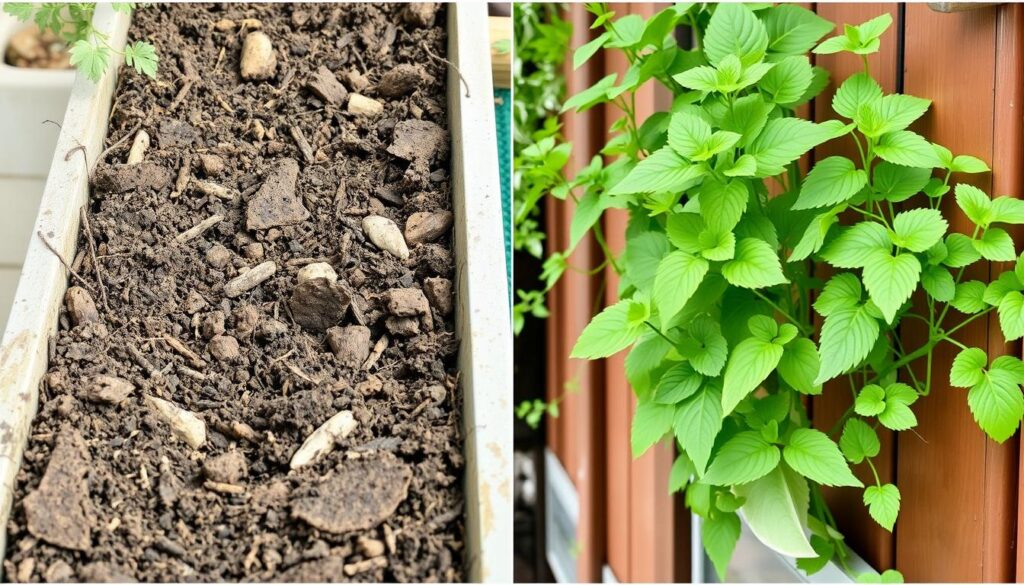
Can I grow root vegetables in a gutter garden?
Most root vegetables need deeper soil than gutters provide. However, you can grow radishes, baby carrots, and small turnip varieties if your gutters are at least 5-6 inches deep. Choose varieties specifically bred for container growing, such as ‘Atlas’ or ‘Babybino’ carrots.
How do I winterize my vertical gutter garden?
In cold climates, remove annual plants after the first frost and either leave perennials in place with protection or transplant them to larger containers for the winter. Disconnect and drain irrigation systems, and check that all brackets and supports are secure enough to handle any snow load. Consider covering the system with garden fabric in extremely cold regions.
Can I use plastic gutters instead of metal ones?
Yes, vinyl (PVC) gutters work well for vertical gardens and are often lighter and less expensive than metal options. They won’t rust and are easy to cut and drill. However, they may degrade faster in intense sunlight and can become brittle over time. If using plastic gutters, look for UV-resistant varieties and consider positioning them where they’ll receive some afternoon shade.
Creative Vertical Gutter Garden Designs
Get inspired by these innovative vertical gutter gardening system designs that you can adapt for your own space:
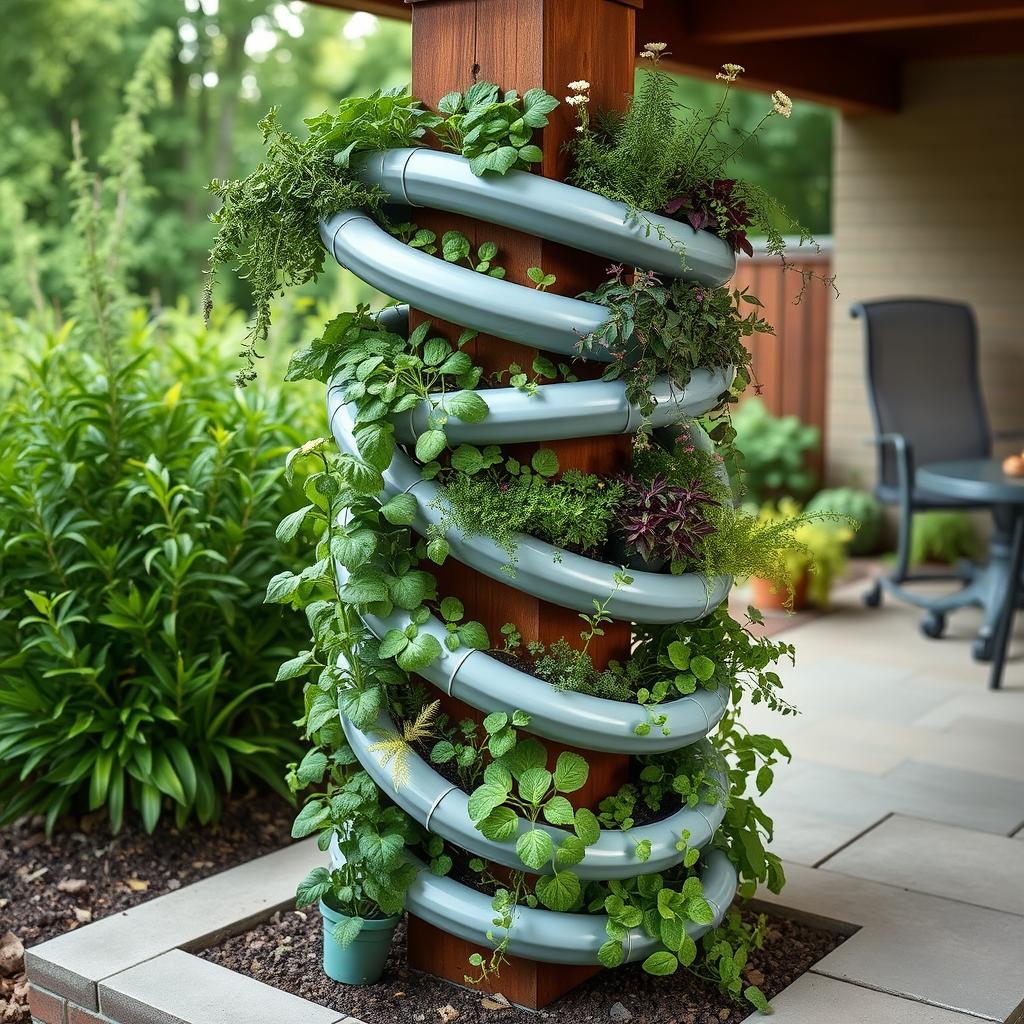
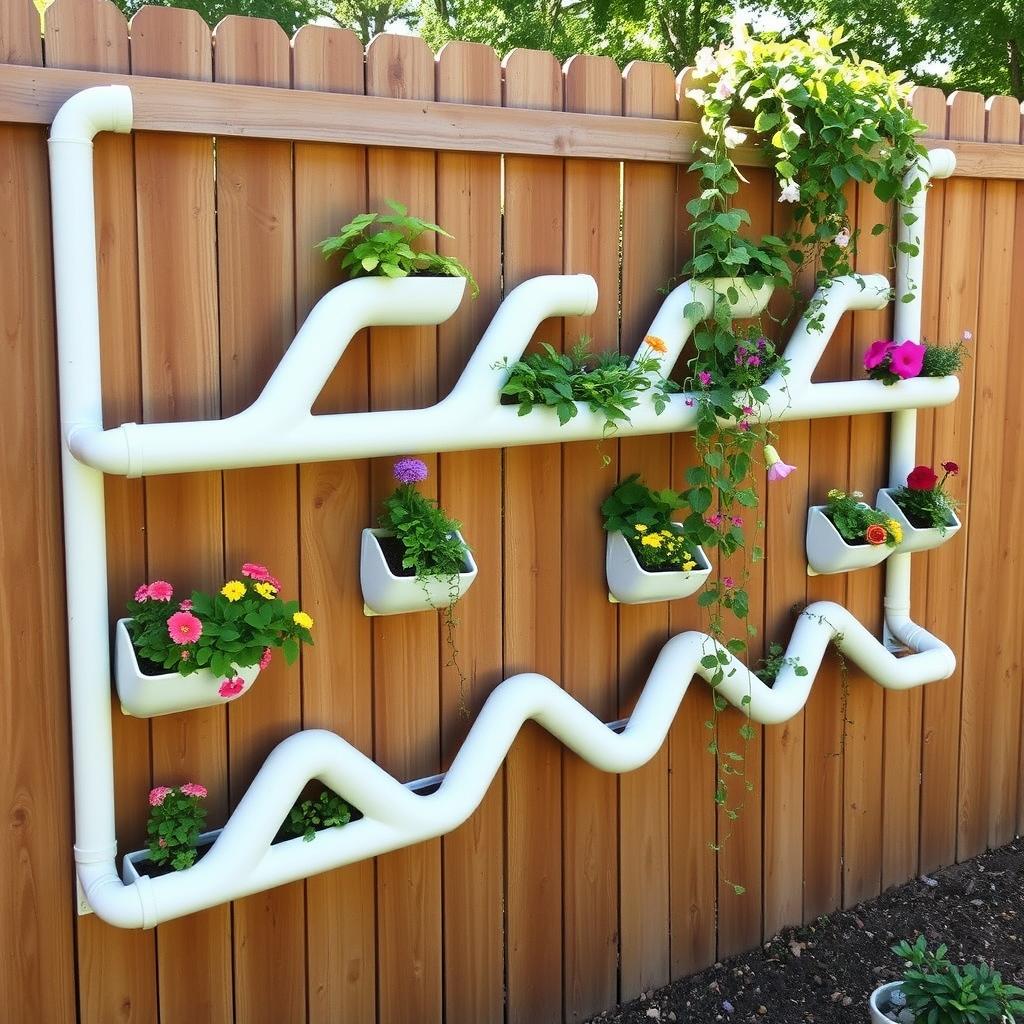
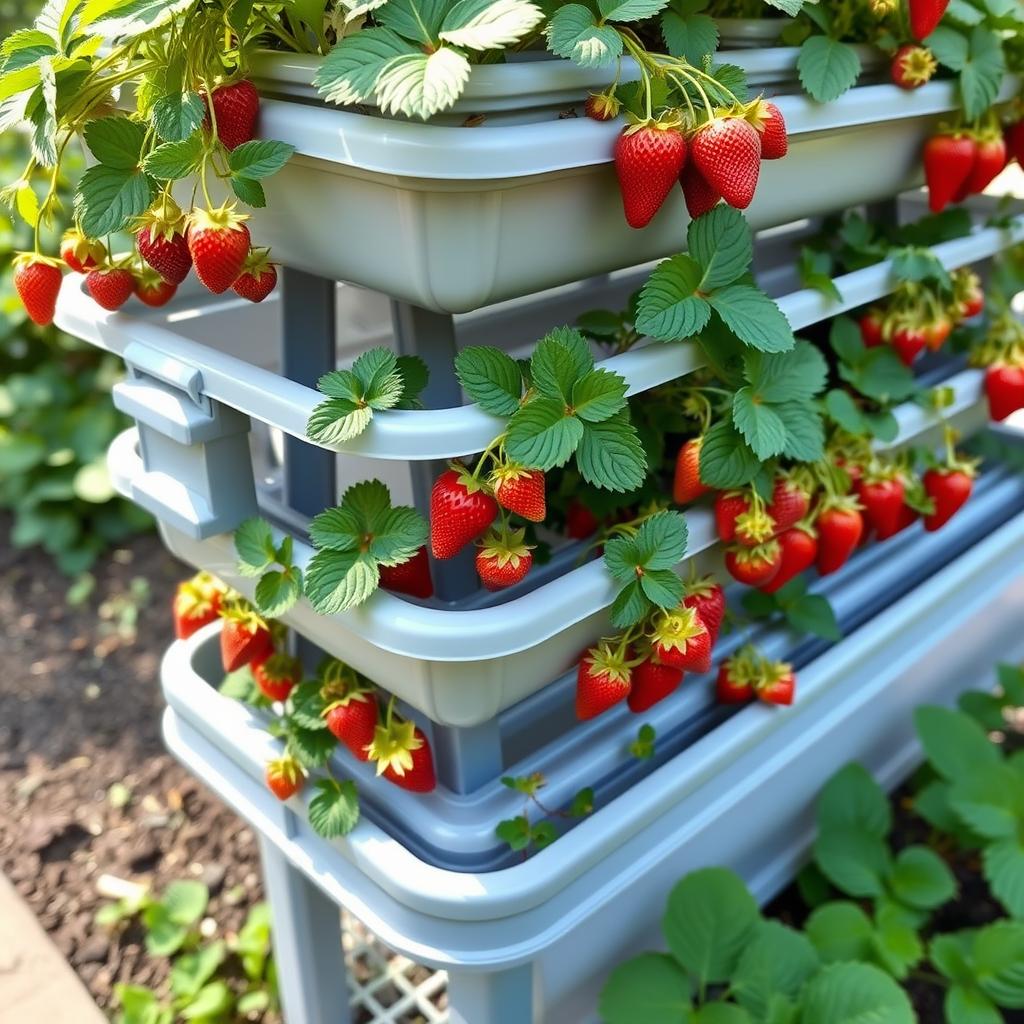
Design Ideas to Try
Herb Spiral
Create a spiral pattern with gutters around a central post or structure. Plant different herbs in each section, with sun-loving varieties at the top and shade-tolerant herbs at the bottom. This design maximizes space while creating a beautiful focal point.
Living Privacy Screen
Install multiple rows of gutters on a freestanding frame to create a living privacy screen. Plant tall, leafy vegetables and trailing flowers for maximum coverage. This serves both practical and aesthetic purposes in your outdoor space.
Edible Wall
Dedicate each gutter row to different edible plants – lettuce and greens at the top, herbs in the middle, and strawberries at the bottom. This creates a beautiful and functional food wall right outside your kitchen door.
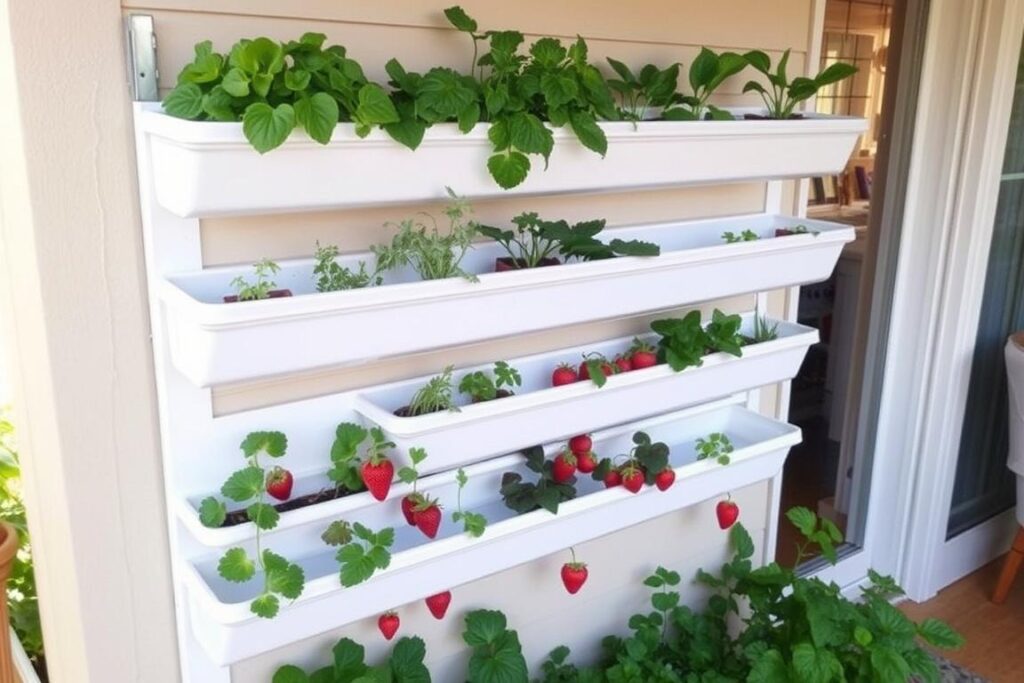
Children’s Garden
Create a child-height vertical gutter garden with easy-to-grow plants like strawberries, cherry tomatoes, and marigolds. Paint the gutters in bright colors and add plant markers with pictures to create an engaging garden space for young gardeners.

Join Our Vertical Gardening Community
Share your vertical gutter gardening system projects, get personalized advice, and connect with fellow gardeners. Sign up for our newsletter to receive seasonal planting guides and maintenance reminders.
Conclusion: Growing Up with Vertical Gutter Gardens
A vertical gutter gardening system offers an innovative solution for growing plants in limited spaces while maximizing water efficiency. By repurposing gutters into a productive garden, you’re not only creating a beautiful and functional growing space but also contributing to sustainability through creative upcycling.
Whether you’re a beginner gardener looking to grow a few herbs or an experienced grower wanting to maximize your harvest in a small space, vertical gutter gardens provide endless possibilities. The systems are customizable, affordable, and can be adapted to almost any outdoor space – from tiny balconies to full backyards.
Remember that successful vertical gardening is about experimentation. Don’t be afraid to try different plants, arrangements, and watering techniques until you find what works best for your specific conditions. With proper planning, installation, and maintenance, your vertical gutter garden will provide you with fresh herbs, vegetables, and flowers for years to come.
Start small, learn as you grow, and soon you’ll be enjoying the many benefits of your own vertical gutter gardening system!
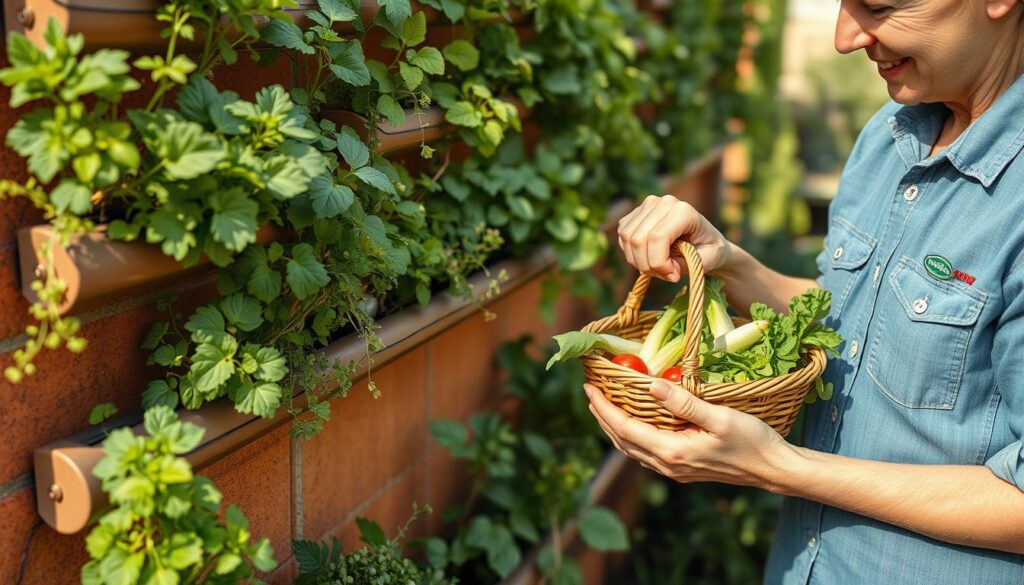
Will is a vertical gardening enthusiast and sustainable cultivation specialist with a passion for helping people grow fresh food in small spaces and dry climates. With years of hands-on experience testing smart irrigation systems, optimizing urban gardens, and exploring eco-friendly solutions, this author shares clear, practical tips to turn any corner into a productive garden. Whether on a sunny balcony or in a compact backyard, Will helps readers save water, maximize space, and enjoy healthy harvests year-round. When not tending to his plants, you’ll find him sipping herbal tea and sketching ideas for new sustainable projects.

